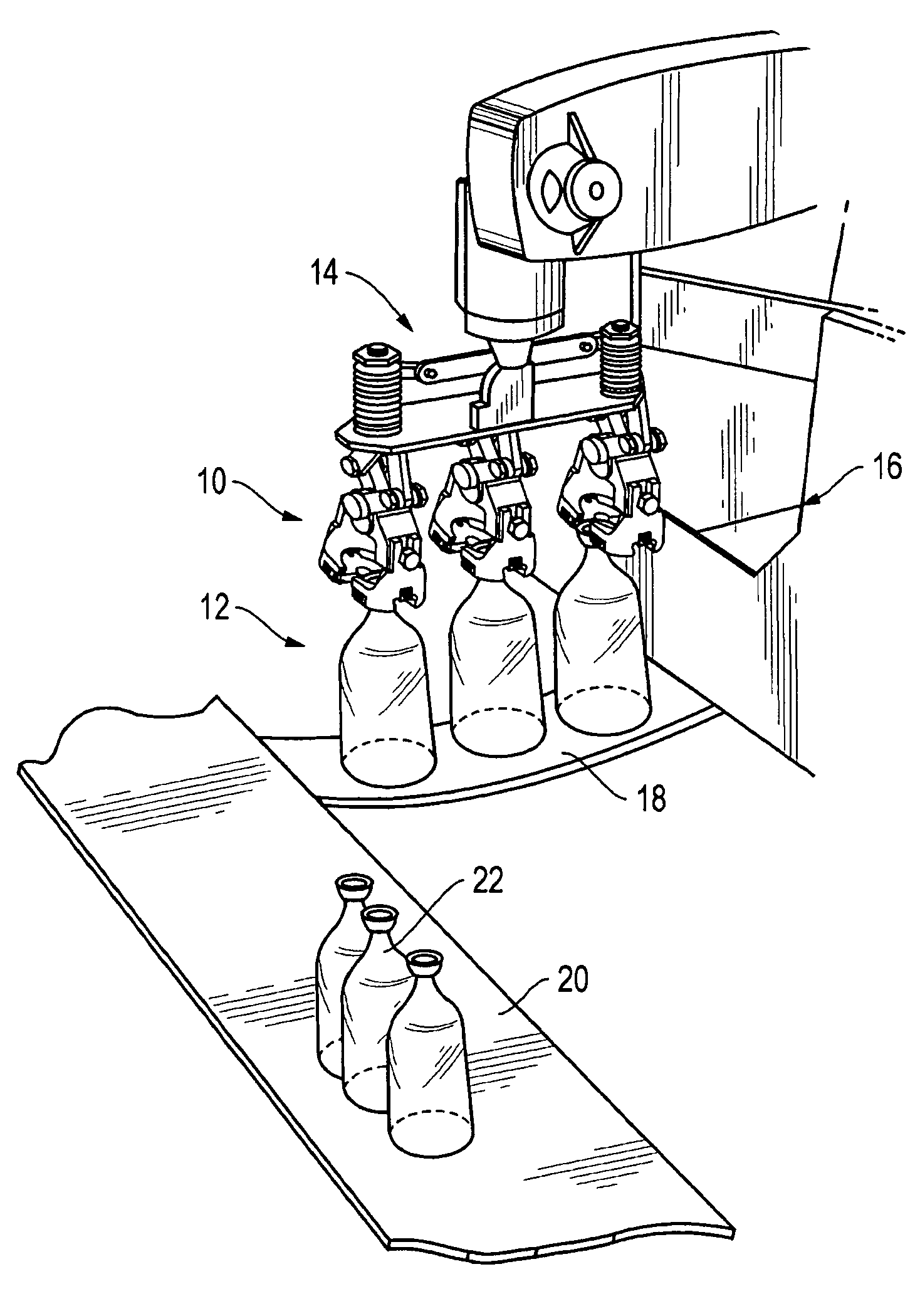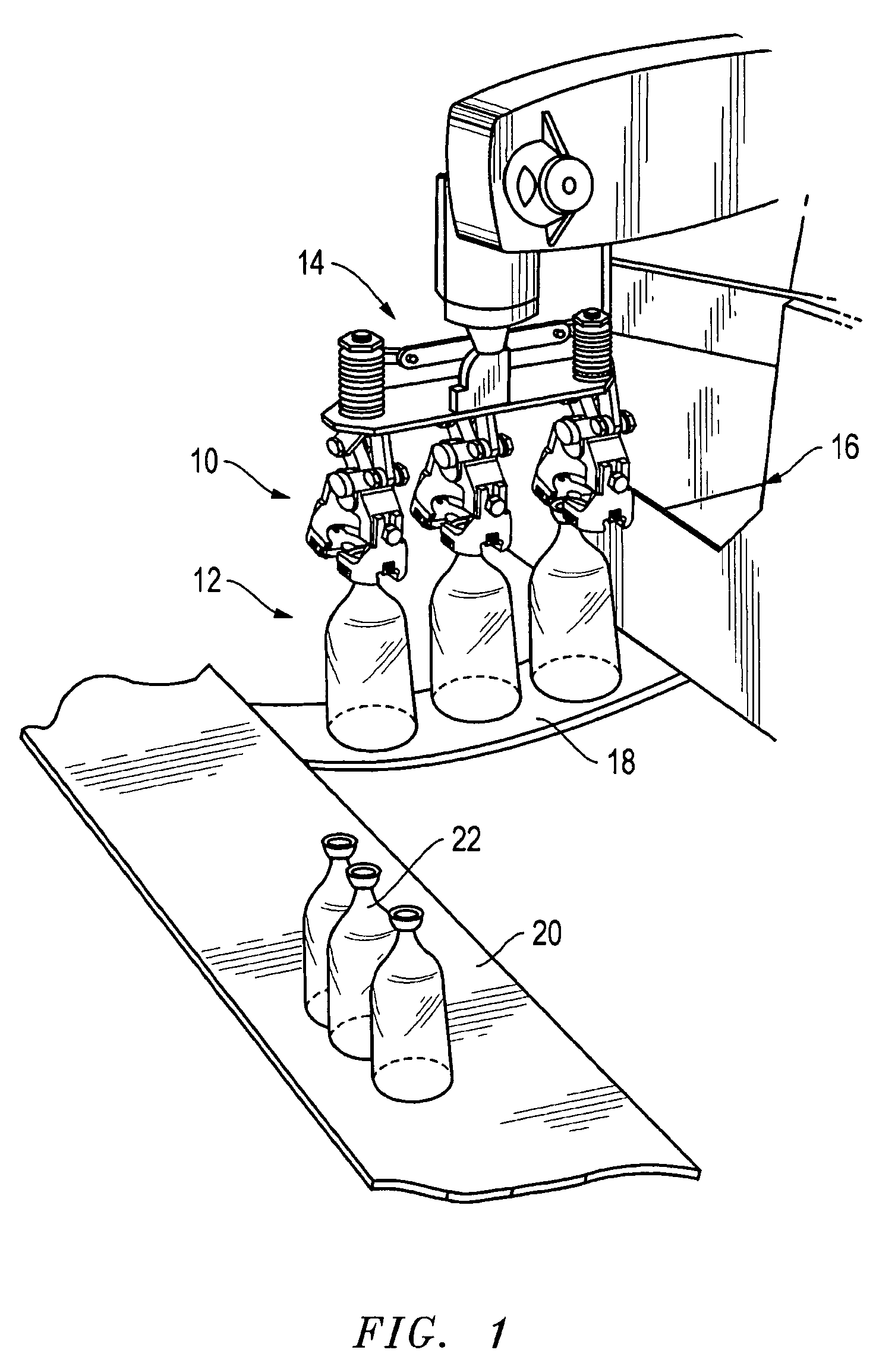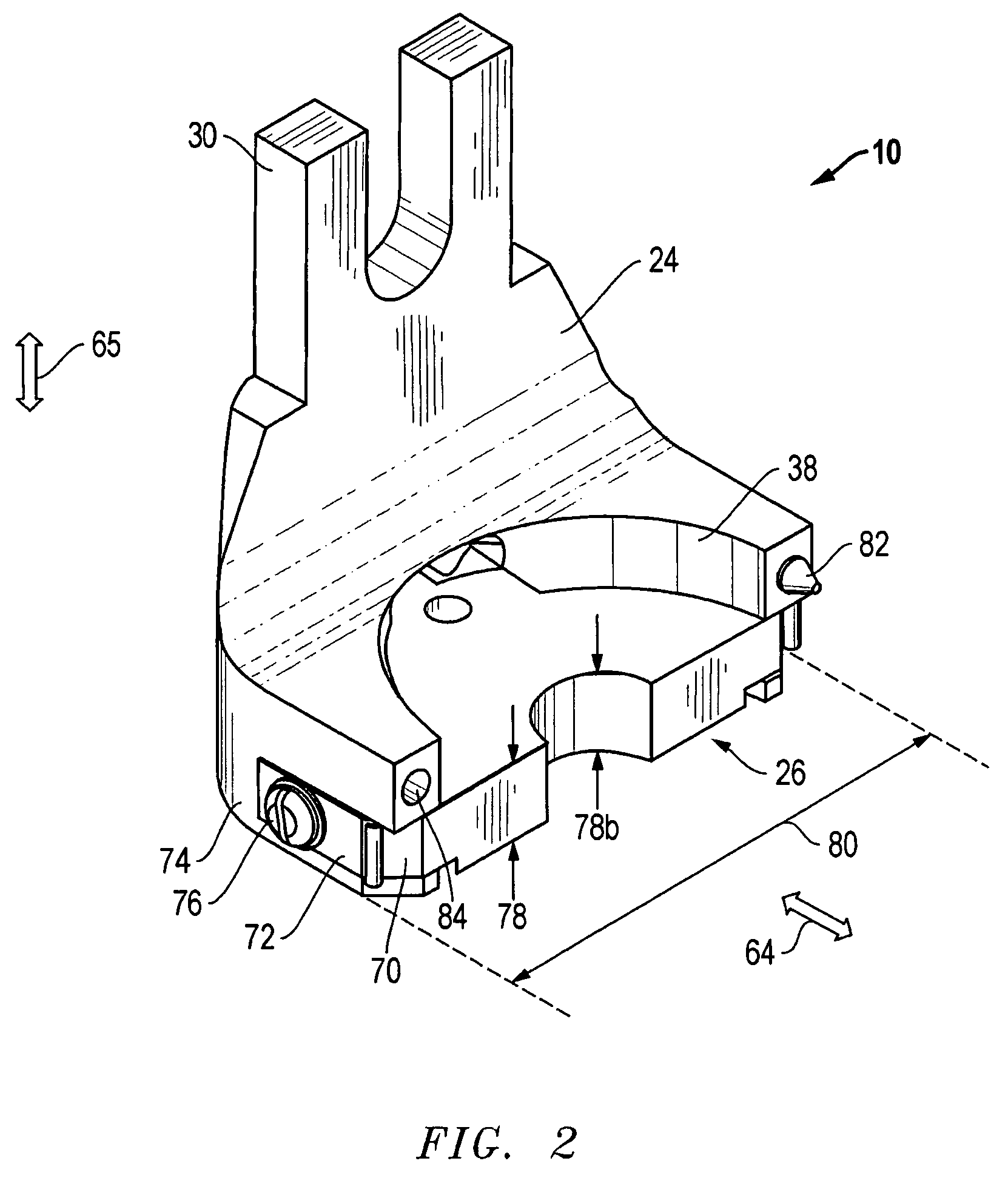System, method, and apparatus for interchangeably accommodating both fixed and floating takeout inserts
a technology of fixed and floating takeout inserts, applied in the field of fixing glass, can solve the problems of not being completely suitable for use for non-metallic materials, easy to be damaged, hot glass, etc., and achieve the effects of reducing the damage to the container, reducing the weight of the container, and improving the efficiency and outpu
- Summary
- Abstract
- Description
- Claims
- Application Information
AI Technical Summary
Benefits of technology
Problems solved by technology
Method used
Image
Examples
Embodiment Construction
[0024]The design of the takeout jaw of the present invention permits machining to close tolerances, thereby ensuring accurate and precise set up for bottle forming machines. The precision machining of the takeout jaws combined with the tightness of the insert in the pocket of the jaw that contains the insert enables the takeout jaws to be accurately located on the bottle in a reproducible manner. This design reduces deformation of the bottle finish at the top of the bottle due to misalignment and, consequently, the number of bottles which must be scrapped. When threaded finishes are required, the inserts contact the threaded finish only at the root and on the underside of the threads to further decrease the likelihood of damage.
[0025]The machine fabrication of the takeout jaws of the present invention eliminates the high cost of tooling of the cast takeout jaws of the prior art and enables economic production even in relatively small quantities. In the prior art, the cast bronze tak...
PUM
| Property | Measurement | Unit |
|---|---|---|
| thickness | aaaaa | aaaaa |
| thickness | aaaaa | aaaaa |
| thick | aaaaa | aaaaa |
Abstract
Description
Claims
Application Information
 Login to View More
Login to View More - R&D
- Intellectual Property
- Life Sciences
- Materials
- Tech Scout
- Unparalleled Data Quality
- Higher Quality Content
- 60% Fewer Hallucinations
Browse by: Latest US Patents, China's latest patents, Technical Efficacy Thesaurus, Application Domain, Technology Topic, Popular Technical Reports.
© 2025 PatSnap. All rights reserved.Legal|Privacy policy|Modern Slavery Act Transparency Statement|Sitemap|About US| Contact US: help@patsnap.com



